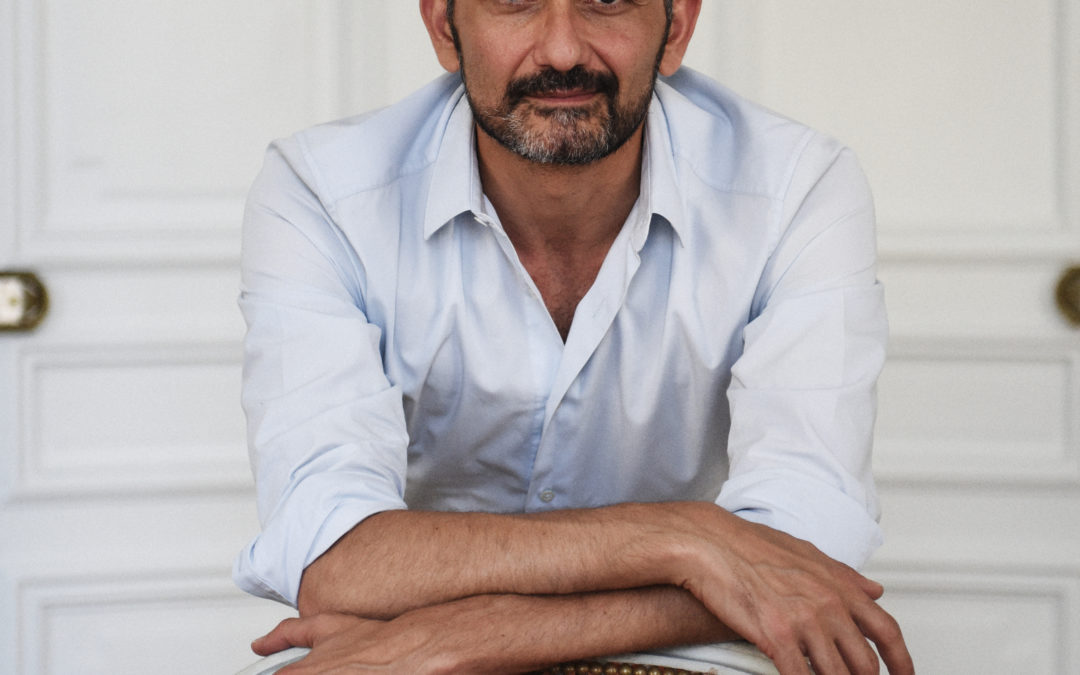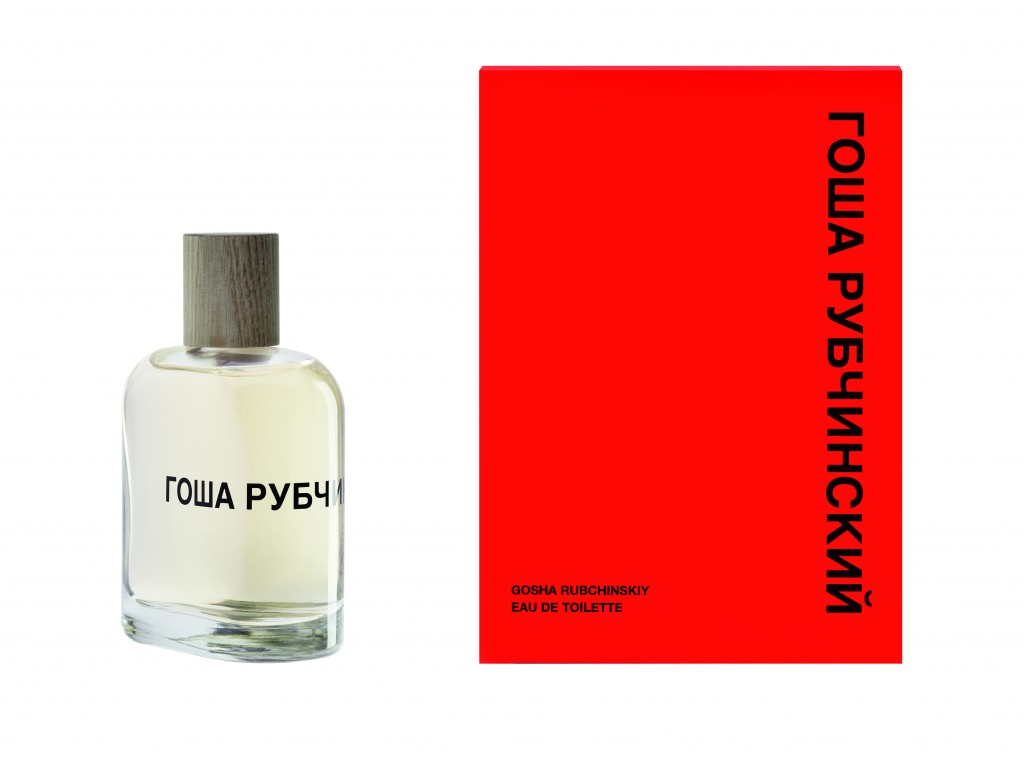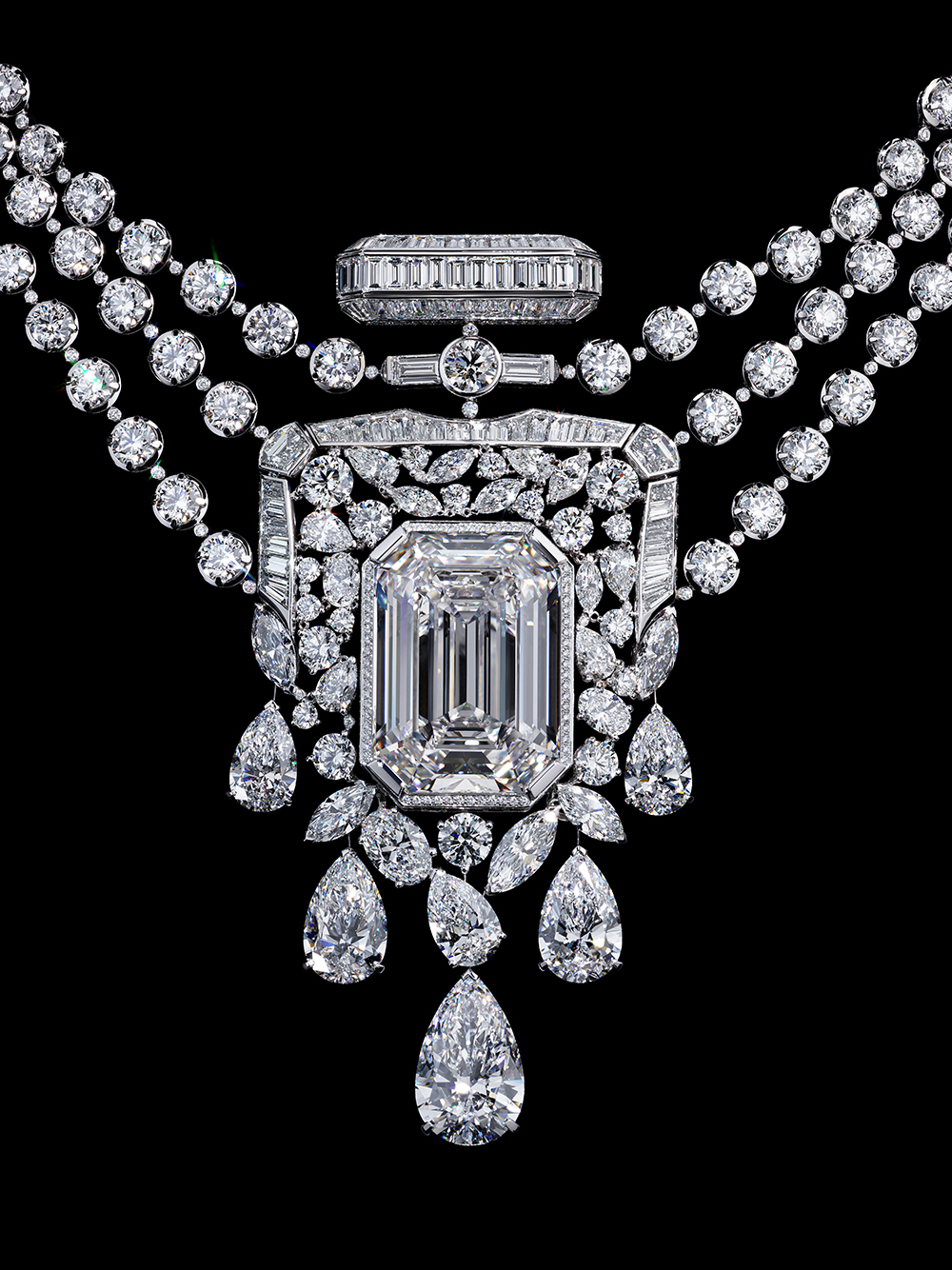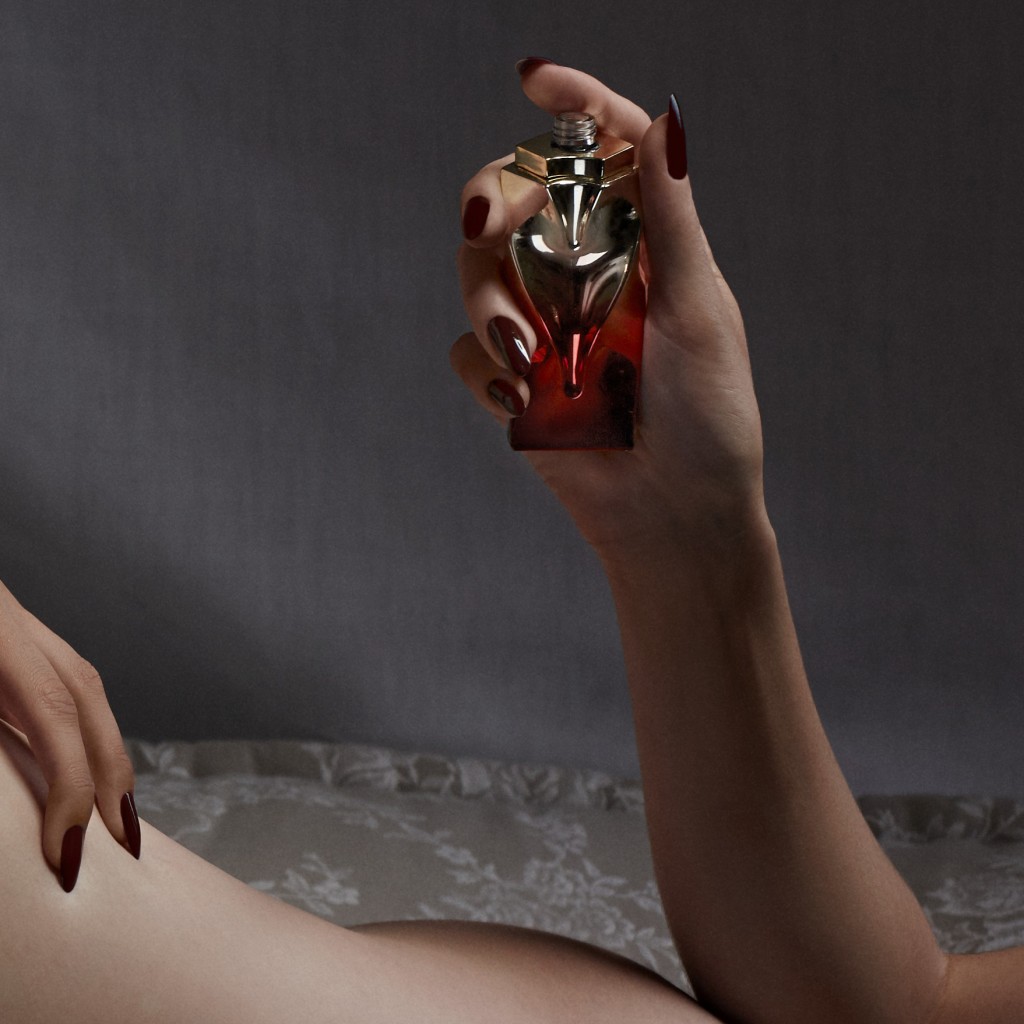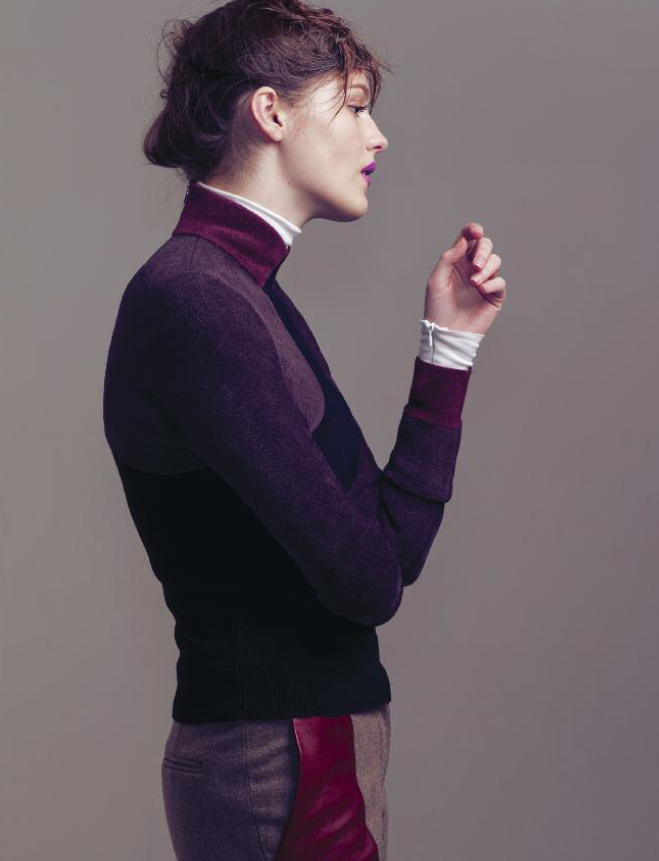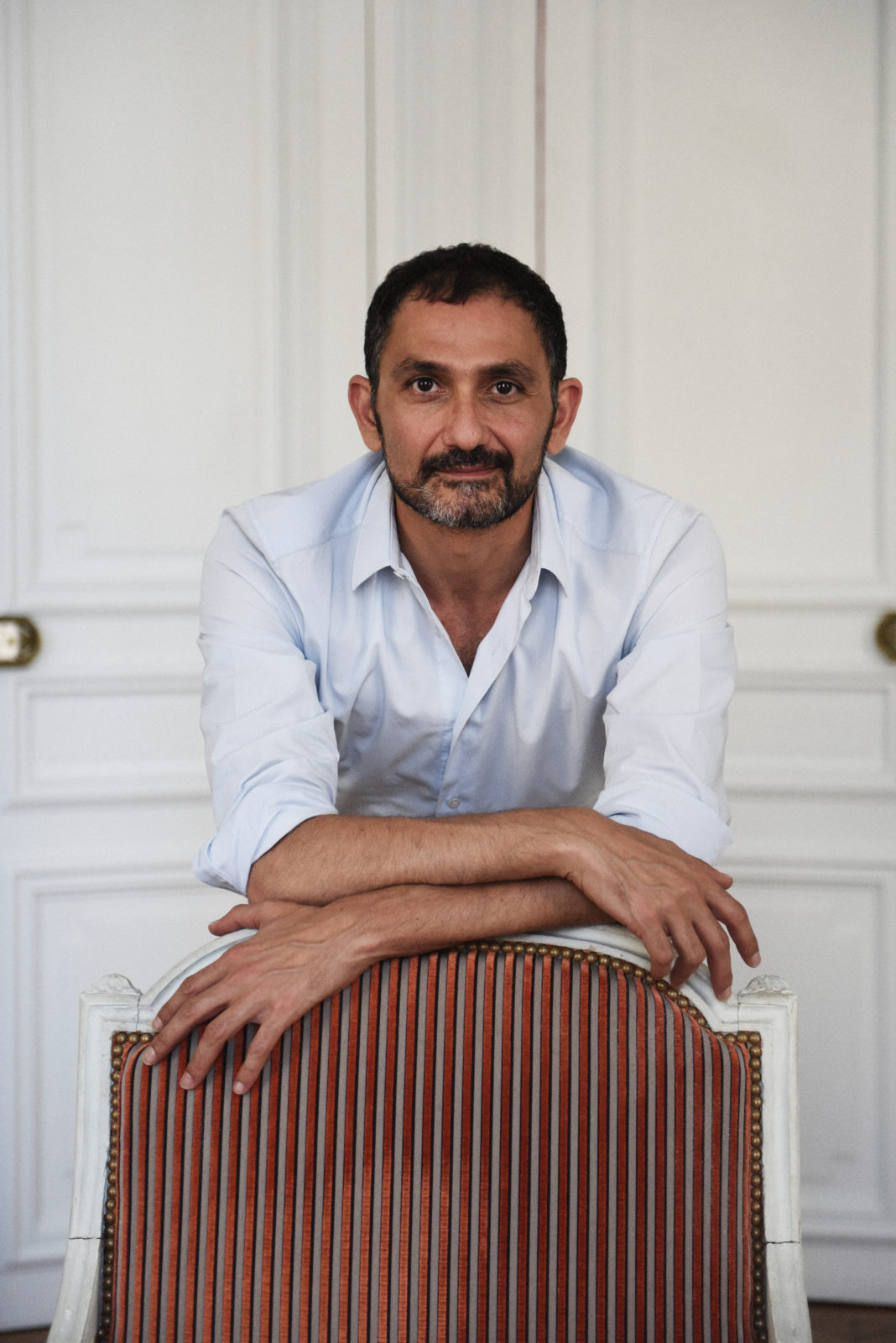
FRANCIS KURKDJIAN
By Crash redaction
Marking the arrival of Francis Kurkdjian as Perfumes Creation Director at Parfums Christian Dior, Crash takes a look back at his meeting with Armelle Leturcq.
Knowing from early adolescence that he had the nose to create the fragrances of the future, Francis Kurkdjian quickly set out to become a top-class perfumer. For his first stunning feat in the industry, he concocted ‘Le Mâle for Jean Paul Gaultier at the age of just twenty-four. It was this fragrance that catapulted him into the big leagues, marking the beginning of a brilliant career driven by a thirst for independence and originality. Ever the lone wolf, Kurkdjian eventually opened his own eponymous house in 2009 with his partner Marc Chaya. We take a look back at his stellar rise and uncompromising vision of luxury perfumery.
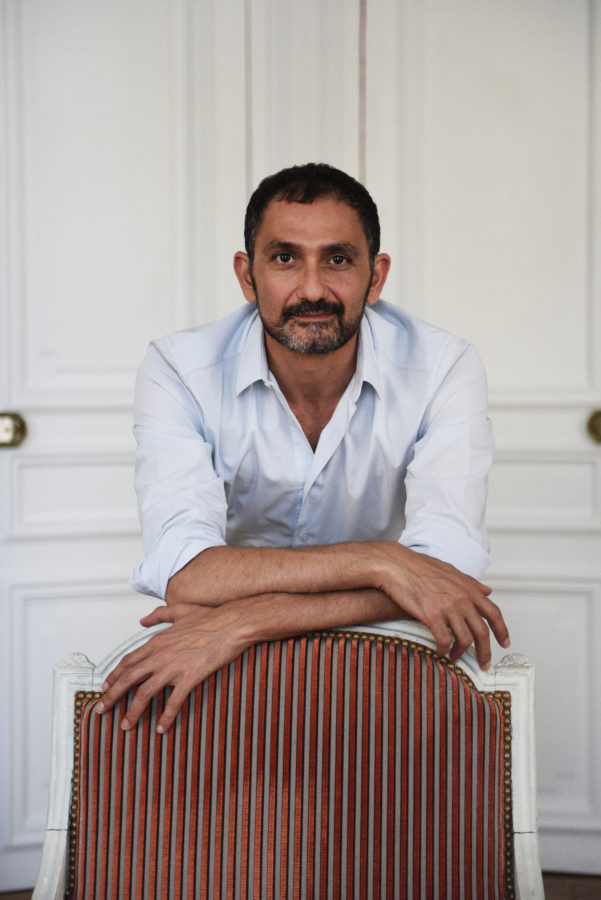
PHOTOGRAPHER – ÉLISE TOïDÉ
AL – Can you tell us about your career?
FK – I was thirteen or fourteen years old, according to my childhood friends with whom I was discussing it not long ago, when I discovered the profession of perfumer and I decided that it would be mine. Yet I don’t come from a perfume background. Just after the creation of “Le Male” by Jean Paul Gaultier, I realized that the perfumer had no say in the process. Personally, I operate on the assumption that the person creating the perfume should have their say in the matter. But when marketing takes over the creative process or guides it too heavily, then it becomes problematic… We often think that creative freedom is like having an open field. But perfume is above all a product that must be sold. For a niche brand or an international brand, there is a playing field that is defined by the product specifications and a certain amount of freedom arises from that. Before the 1990s, we didn’t talk much about marketing, these are terms that came later – especially in the luxury trades.
AL – Yes, a few years ago we never dared to speak of marketing in luxury.
FK – Yes, it is a term that comes from mass consumption. Luxury took over all these tools much later. While developing the perfume for Jean Paul Gaultier, I quickly became aware that I would not meet the creator. At the lab where I worked, I could see how things were going for the other perfumers. I was twenty-four years old, I was out of school but the average age for a perfumer at the time was forty/fifty years old. All of a sudden, I lowered the age range quite significantly. The young perfumers I was able to train in school were all in too much of a hurry to succeed.
AL – Was there any ageism?
FK – There’s ageism everywhere. You still need to put in a tremendous amount of work and experience. It took me almost fifteen years to get comfortable. When I say “comfortable”, I mean that I have an idea, I put it in place and it works. Even still… There are always a few things I try to do that won’t necessarily work. (laughs). If it had been too easy, it would have meant that I was repeating myself. If you really want to blaze a new trail, there has to be a challenge. But be careful because it shouldn’t be painful. We often think that creativity comes from pain, but when you love your job, it’s never painful. If you’re suffering, then maybe you aren’t cut out for it.
I rose very fast in my career, like a comet. The problem with a comet is that it can pass by very quickly in the sky. (laughs) After “Le Mâle”, the lab I worked for, Quest International, sent me to the United States. I was the fly in the ointment. You had perfumers who had been toiling away for forty, fifty years and all of a sudden, this young kid comes along to shake things up. I had plenty of opinions and never hid them, because I don’t know how. Many of the perfumers were glad that I left, which also did me a lot of good. I don’t regret it, but it was a very difficult time for me. I ended up in a branch of the lab in New York and it was a nightmare in terms of work. I had just created a successful perfume, but I had to learn the technique that I didn’t have. Le Mâle was unexpected for a beginner. Then I also realized that I was going to be unhappy. We ask the campaign photographer to smell the perfume and ask for his thoughts, but we never ask the perfumer for their opinion of the photos. In the end, the perfumer is just a nose.
AL – After you create the fragrance, you are no longer in charge of it?
FK – Actually, we never were in charge. Things were different when I worked with Narciso Rodriguez. Nathalie Helloin Kamel, who was Head of Narciso Fragrances, involved us in the world of Narciso by showing us the inspirations for the bottle and introducing us to the designer. But that only happens on one out of every twenty-five projects. On top of that, there is also the competition aspect. It’s part of the business, but with a brand like Jean Paul Gaultier, I was placed in competition for twenty years. But when you win every competition and you’re constantly put back in the game, there is a point when it becomes unjustified. Competition breeds rivalry, but I don’t think it’s a healthy rivalry by the end of the seventh fragrance.
A perfumer’s career can be short-lived, so I really wanted to find another option. It started with me creating bespoke perfumes almost twenty years ago, long before the creation of the House. It was the embryo that would lead to my chance to create a house. Then I met my partner Marc Chaya at a birthday party. He was a little bored in his job. We became friends and traveled the world together for a month. I was in between jobs. He tried to provide a structure for my ambitions, guiding me and reminded me to be patient…
AL – What is his background?
FK – He came from Ernst and Young. He is into processes and numbers, but he also has a tremendous artistic sensibility. We didn’t want to wait; we wanted to build. I felt a sense of urgency just before I was forty. We needed to push forward! When we first launched the house, I asked myself if the market really needed me. What more could I bring that wasn’t already there with Annick Goutal and Serge Lutens? Le Labo had just launched their own house, as had Frédéric Malle.
AL – Is there an obligation to create so many new fragrances?
FK – No, but can you talk about me if I don’t come out with something new? I’m not so sure. Can stores continue to promote me if I stick to my existing stock? We now have a very well-balanced portfolio of fragrances. The challenge is now to create new items without taking away from our existing creations. All I’m asking is not to have to do it every year.
AL – Just like a fashion house, you release new items twice a year?
FK – No. If we did that, I would be out of ideas in five years. It takes time to find inspiration and spark desire. Beautiful ideas take a long time to hatch. Three or four years ago we started thinking about how we could get out of this rhythm. On one hand there is creation, and on the other there are novelty products. The Amyris perfume extracts are a novelty product and not a creation. We take an existing name and fragrance type and develop a new variation on it. We don’t do flankers, instead we follow classic patterns because consumers can easily get lost among the choices. “Gentle Fluidity” is this year’s creation. It’s a new story and a new approach to perfumery for women and men. Next year there will be something in between.
AL – One a year is fine.
FK – It’s still not easy. It takes so much time for distributors to catch on, retailers to get used to the product and customers to become loyal… We have just about six hundred outlets worldwide, compared to the behemoths who have somewhere around thirty or forty thousand. I’m not the only one who sets our tempo. But in the early days, there were just as many launches on average. When you look at Guerlain catalogues from the 1920s, they launched ten creations a year. There were just fewer brands…
AL – There wasn’t much apart from Guerlain.
FK – Yes, a lot of brands have vanished. I recently got out my catalogue from the 1925 World’s Fair, where there was a beauty pavilion with about fifteen brands. Moreover, the fifteen brands that exhibited represented the high end of perfumery at the time. There were easily two hundred brands of perfumery. Today things make a lot more noise; there are different methods and resources available. Perfumers also copied each other all the time back then. It took longer because they had fewer tools for copying. What changed is that perfumer was a luxury product in the past, according to that old notion of luxury infused by fine art. Like the great perfumer Coty who had Lalique make his bottle…
AL – For the most part, they were also perfume houses and not fashion houses.
FK – Yes, what I always say is that to find a good pair of shoes you go to a shoemaker, to get a nice hair style you go to the hairdresser, and for perfume you go to the perfumer. People stuck to that notion at the time. All the collaborations meant that there was a fairly substantial artistic infusion anyway. It still happens today, but I’m not sure the artists collaborating with today’s perfume brands will leave a substantial mark in the industry. Lalique, Ruhlmann – they were on another level. Quality was so high because the owners of those houses did not come from the consumer market, instead they were aesthetes, collectors, people who had a real aesthetic vision. Starting in the 1980s/90s, perfume began to democratize as mass consumption arrived. That’s where you see new players joining the game like Procter and Gamble, Unilever… It’s a new era but I don’t see it as a problem. You just have to be consistent. When you look at the rankings of perfumes around the world, all you see are the best perfumes. There are brands that spend millions of dollars trying to impose their creative style. But if the perfume is no good, you can spend all the money in the world on advertising and the model, but it will never be a success. Once someone buys your perfume and puts it in their beauty cabinet, they’re not going to be walking around with the bottle under their arm. If there’s no magic when it hits your skin, then the perfume has nothing to say… If your new perfume hasn’t earned you a compliment by the end of the day, then it’s probably not going to stick around. Perfume is an invisible accessory.
AL – At the same time, it is very abstract: there is no recipe for a successful perfume.
FK – There are a few recipes, even if they are rather flexible… You can have a very nice base fragrance and great harmony, but if it doesn’t fill the air then it’s a failure. That is the number one prerequisite. Besides, I always tell my students: “A good perfume that doesn’t fill the air is no more than a good idea.” Second, each perfume has to tell a unique story. I often compare it to figure skating: there is a technical score and an artistic score. If you’re a strong, technical skater, that’s great; but if the rest of the time you look like an awkward bird on ice, it just won’t cut it. (laughs) On the other hand, if you are very graceful but you fall on every jump, that won’t cut it either. The same goes for perfumery, even though we often forget about that aspect. It’s what we call the olfactory signature, and it’s very complicated to master.
AL – Where do your ideas come from?
FK – They come from a story, an emotion that I “freeze” by finding a name before turning it into a formula. I had an idea for 2022, but everyone wants me to release it in 2021. Now I have that hanging over my head. (laughs)
AL – And if not, out of your house?
FK – I’m a very immersive perfumer. Whenever I’m working on a project, I always see myself as the perfumer of the brand that hired me or put me in competition. For each new brand, I make sure to look at their products, make connections, go into the shop to see the materials, and even try on clothes. Over the years I’ve compiled Assouline books and catalogs from every brand. I always start with the name of a perfume. It’s the name that marks off the territory I’m going to be working in. As soon as I can put a name to a story, then the adventure can truly begin. For my own house, I choose the name; but when I work for another brand, I have a code name. For example, the code name given by Jean Paul Gaultier was “Pius VII”. I only heard the actual name, “Le Male”, just ten days before launch. When I saw the bottle – that blue torso with stripes – I thought my first perfume would be a resounding failure.
AL – Why don’t they share the name with the perfumer?
FK – Because it’s confidential. You have to register the names – and they don’t include the perfumer. But I always give my own code names. For me, Le Male was called New Beat, because it was the era of house music and the new beat movement served as a counterpoint to the house. If I don’t have a code name, I don’t have my story.
AL – Do you receive a brief when you start working for another house?
They give me a code name and a brief, but it doesn’t always inspire you to dream. Even when I worked for Hedi Slimane at Dior I had code names. “L’eau noire” was called “Lavande noire”. At one time, I had about twenty projects on my plate, and their names are what helped me get back into the atmosphere of each project. When I moved from Vague Lumineuse to Nuage Parfumé, I knew that one was Van Cleef and the other Boucheron. At first, it’s hard to manage more than one project at a time, but then you get used to it. Karl Lagerfeld explains it very well. He’s someone who has inspired me enormously.
AL – He had his own language…
FK – So much culture! So many references. The problem is that culture and history are often scary because there can be a dusty, old-school feeling. But it’s the foundation that lets us grow.
AL – How do dreams play into your work?
FK – I assume that dreams are meant to be fulfilled and then make way for new ones. I’m not the kind of person to dream about going to the Moon. Even though I’m trying to go by proxy. I really like space. I don’t have any out-of-this-world dreams, they’re all pretty attainable. My father once asked if I ever thought I would run my own house. I told him: “Not in my wildest dreams”. I always knew perfumery was my calling, but I never thought it would include running my own house. I wanted the job and I went after it. I didn’t have a background in the industry. You might say I was put through the ringer, because the people in Grasse could not really stand Parisians. I remember when I was looking for an internship, my CV was in the pile when the perfumer who was interviewing my friend said, “We also employ foreigners. Look at that weird name: Kurkdjian”. Perfumery is an intellectual profession, and as long as your brain works somewhat, you have a chance.
AL – You still need to have a gift, right?
FK – Yes, but I don’t feel like I’m all that good. One girl in my class could name all the ingredients of every perfume she smelled. But she was awful as composition and had no inspiration. Ideas don’t fall from the sky. I’m not Chateaubriand, staring at the sky and waiting for inspiration to come! I learned all I know by listening to others. During the tribute to Karl Lagerfeld at the Grand Palais, Caroline Lebar said: “For me, the sound of Karl’s office is the sound of paper falling into the trash”. If you don’t go looking for the idea, it will never come to you. Lagerfeld is someone who spent his time at Colette, Galignani…
AL – Did you ever work with him?
FK – No, but I had the chance to meet him several times. To go back to the topic of inspiration, I take art history classes once a month for two hours, where a professor comes and discusses topics such as the floral motif in art, the history of light in art. There is a strong connection between light and scent for me, notably in terms of pigment and light colors. If I didn’t have those kinds of experiences, I’d wither away. I can’t live on the little I know.
AL – You have to keep feeding your mind. Karl always made sure to do so. He also surrounded himself with young people and kept an open, unbiased mindset. Creators who stay locked in their own worlds with their band of sycophants just can’t cut it.
FK – I’ve been around too many self-centered creators and I don’t want to be like them. If they want a new fragrance with the same perfumer, there has to be a new inspiration. At my house, since I don’t have all that, I’m in a bit of a pickle. (Laughs) I have to brief myself…
AL – It’s good to spend time with artists, musicians and other inspiring people.
FK – Yes, I collaborated with Yann Toma about ten years ago. I had created a scented drinking water called L’eau bleue. It was a flavored water. We also produced a wonderful video for it. I also like Elias Crespin, a Venezuelan kinetic artist. I discovered him at the FIAC art fair five years ago. One of my dreams is to have a work by Elias at home. I love theatre, too, because it reminds me of my dance years. Cyril Teste is a young director I worked with in 2017 on an adaptation of Festen, which was performed at the Odeon Theatre, and this year on Opening Night with Isabelle Adjani. We also have a project with gallery owner Thaddaeus Ropac coming up next year. I’m fortunate to want to do things other than bottles of perfume. I perfumed the fountains of Versailles, I worked with Sophie Calle, with Sarkis. I also worked with the Labèque sisters whom I love! But now I would like to give young artists a chance. Throughout the history of perfumery, young houses have often worked with young artists. I’m not going to pick up Jeff Koons to design a perfume bottle. I would be proud if in fifteen years Christelle Boulé, whom I sponsor through the House, becomes a recognized photographer. The day you stop taking risks is the day you die. You also have to learn how to throw out everything you’ve already done. When Maria Callas talks about music, she wonders how to “serve the craft”. I’m trying to apply that same principle in perfumery. The famous phrase from Jean-Louis Dumas Hermès is displayed on my desk: “Are you having fun today?” It’s great. He talks about when one of his grandchildren asks him what he did that day, and he answers that he went to work. Then he thinks about his answer and decides: “I should have told him I had fun”. These are the personalities that continue to feed my mind.
AL – Tell me about your perfume called “Gentle Fluidity”.
Initially, I wanted to create a “couple’s” fragrance. The idea for it came out of a discussion I had with a journalist I like very much, who is a US-based correspondent for Vogue France. She’s like a kind of radar, and she even lectures in Silicon Valley. That was four years ago, and she told me about the idea of gender fluidity, which I thought sounded like a nice name for a perfume. At the time, I was working on a perfume called Smoking, no smoking. I found it quite funny with the pun in French, as well as the cigarette, a dark note, a light note… But smoking doesn’t go over so well in the US market. Even though Tom Ford released a fragrance called Fucking Fabulous! So I went back to my idea of gender fluidity and registered the name as a perfume. We started working on the DA with the in-house studio, and I wanted to take this exercise in perfume to its furthest extreme. All of a sudden, the concept really caught on. So when I was talking to Cyril Teste, I realized that he heard me saying “gentle fluidity”, because I speak very fast. I thought it was a great idea, so I called my partner right away. “Gender Fluidity ”had too many connotations, so I had to adapt it ever so subtly. I also adapted my formula. I wanted all the ingredients to be gender fluid, up to the point where two formulas form a single gender fluid being that is both one and/or the other. Every perfume has its own little history. For “À la rose”, the goal was to win over the Japanese market. Our portfolio was not suitable for Japan and we needed to get a foothold in Asia. You have to speak to each culture according to its own codes. I’m not going to reach the Japanese market with oud, just as I won’t reach the Middle East market with lemon. What’s interesting is to talk about French culture while using the Japanese codes. For “À la rose” in Japan, there was a lot of talk about Marie Antoinette, since the Japanese know all about her. In the Middle East, I don’t have any trouble because it’s a culture that I understand very well. One country I don’t quite understand yet is Korea. In Japan, people have a very strong self-image, but also a modesty specific that is specific to their culture…






